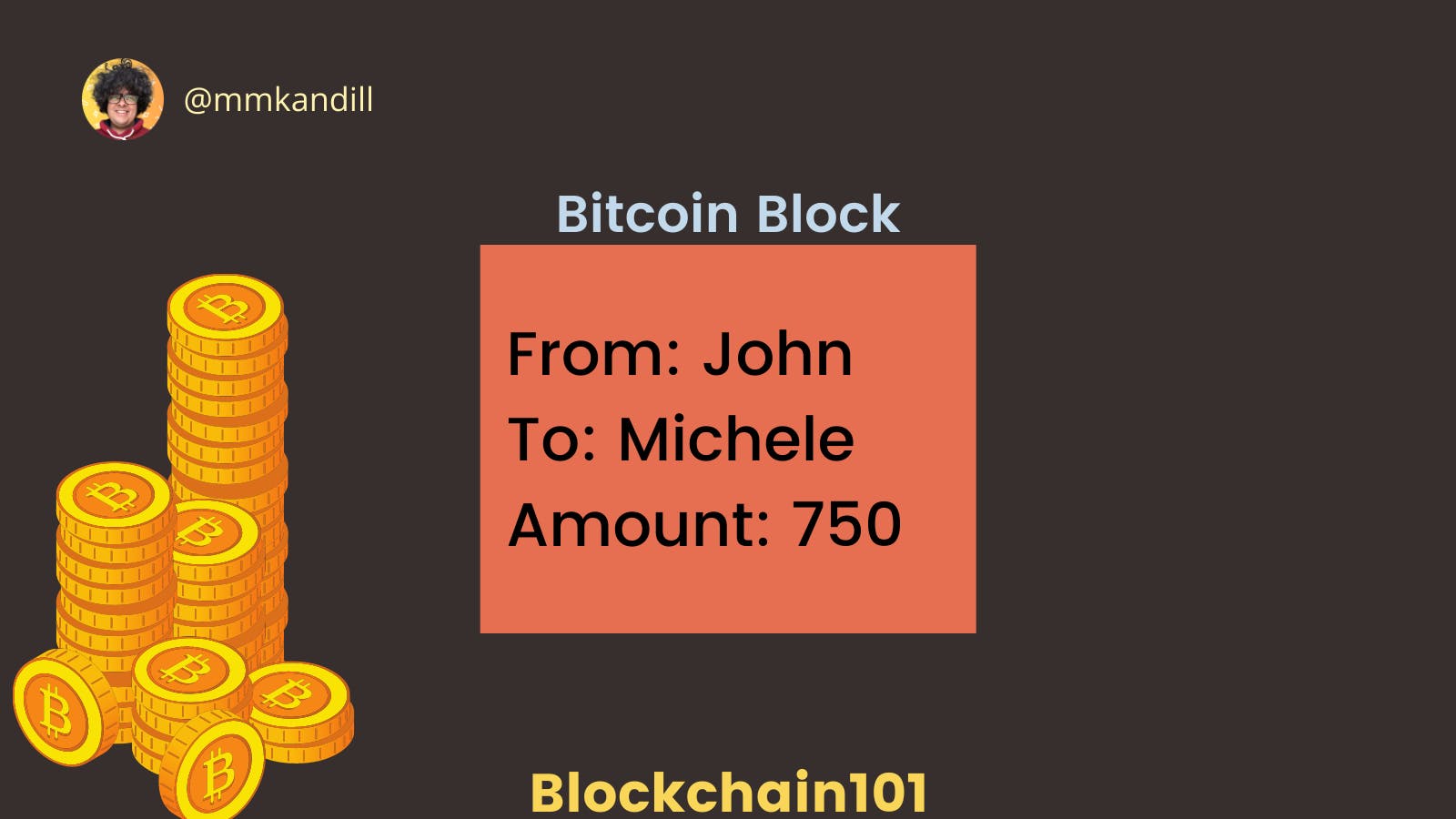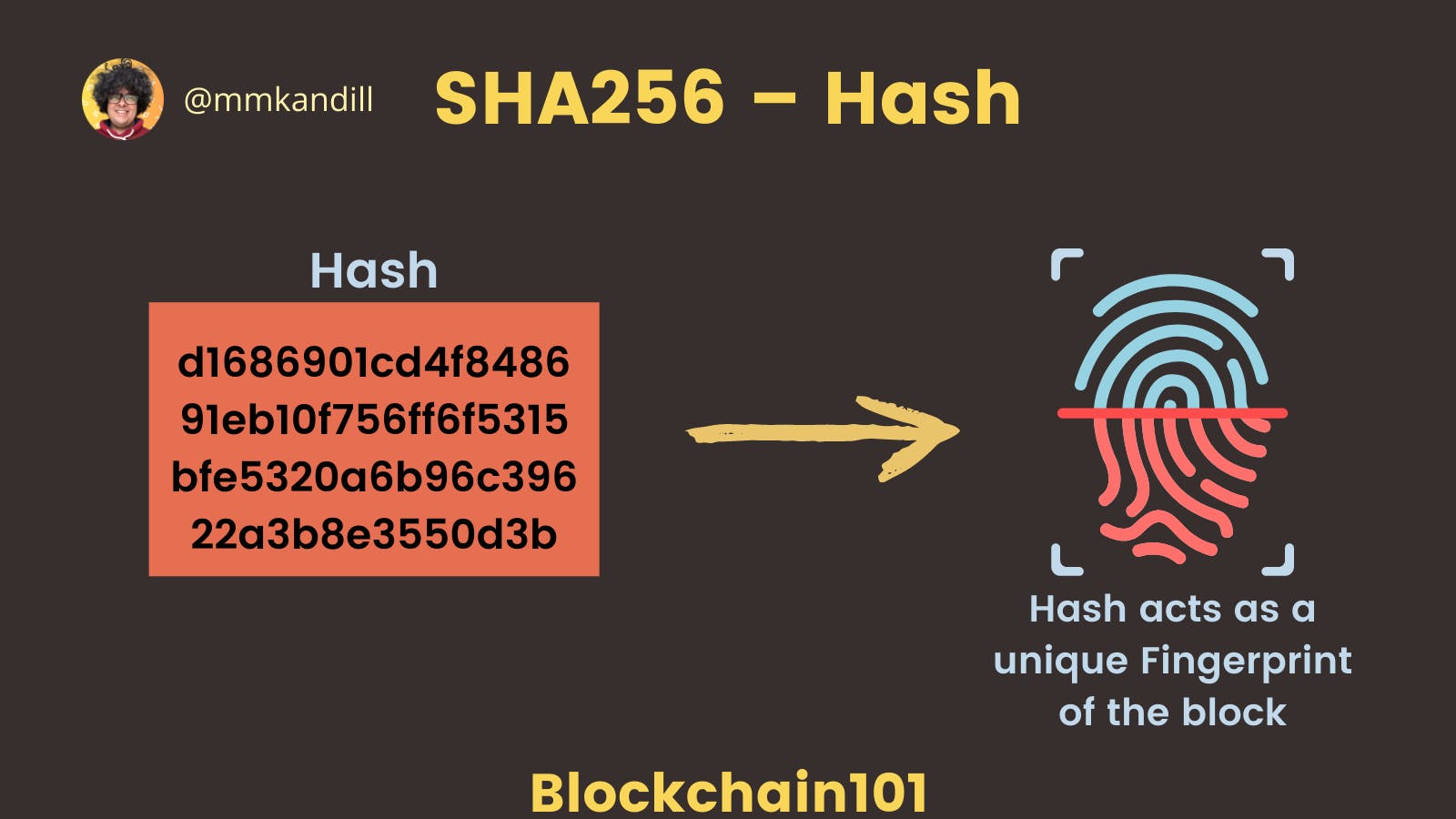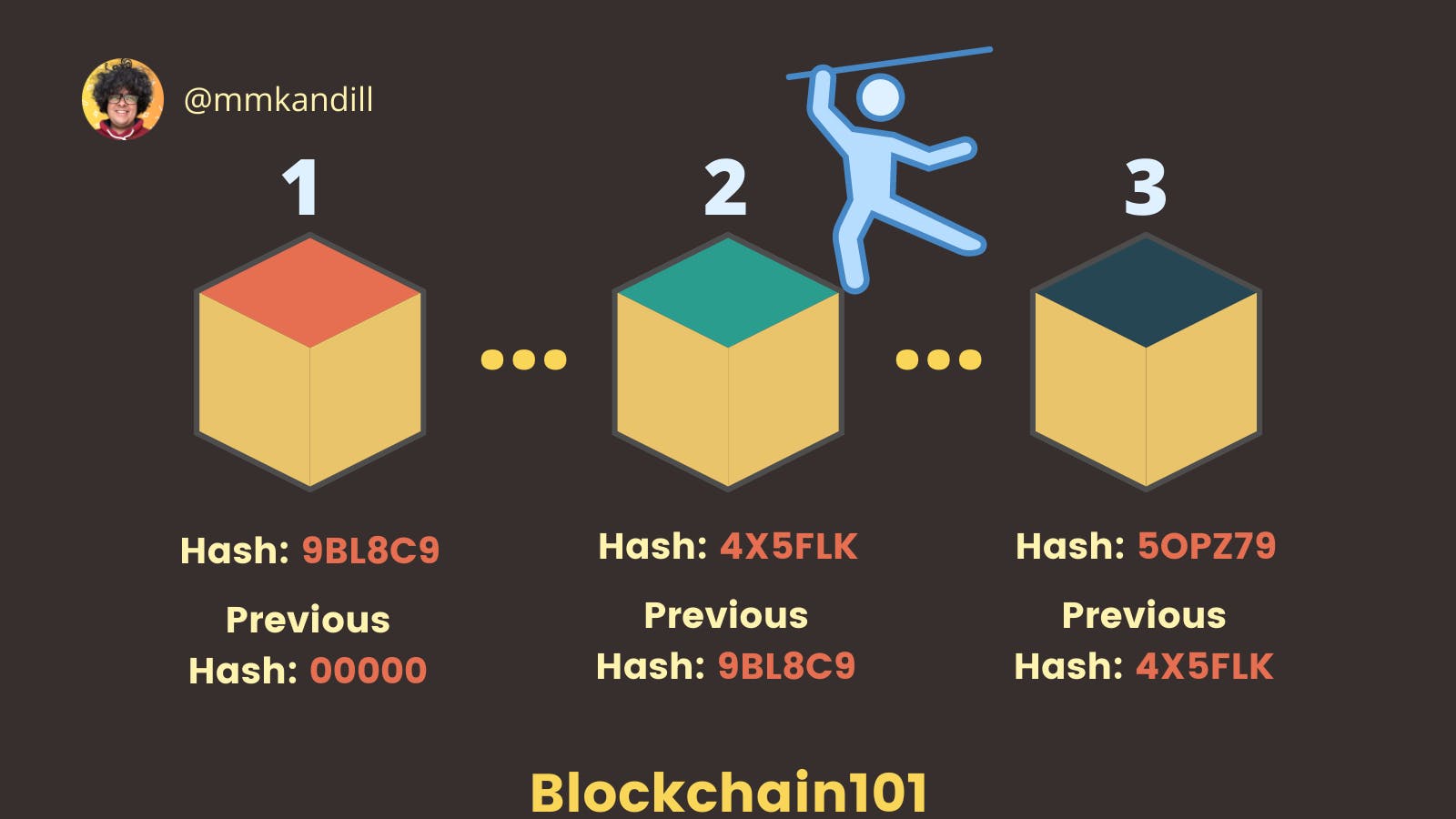Blockchain101 - Block and Hash
Helping you learn while I do the same:)
In this article, I will discuss the block and hash through some simple diagrams to keep it simple and effective for you. Wait for the rest of the blockchain series :)
Blockchain:
A Blockchain is a chain of blocks that contain information. The data which is stored inside a block depends on the type of blockchain. For Instance, a Bitcoin (BTC) Block contains information about the Sender, Receiver, the number of bitcoins to be transferred.

Hash:
A block also has a hash. it can be understood as a fingerprint that is unique to each block. It identifies a block and all of its contents. So once a block is created, any change inside the block will cause the Hash aka the unique fingerprint to change.

Block specs/inside the block:
- Data
- Hash
- Hash of the previous block
In the diagram example, where we have a chain of 3 blocks. Indeed, the 1st block has no predecessor, that's why it doesn't contain the hash of any previous block. Imp: the first block in any chain called Genesis Block.

Why do all blocks are contained hashes of the previous ones?
This is the technique that makes a blockchain so secure.
Assume a hacker can modify the actual data present in the Middle (no 2) block. The Hash of the Block also changes. But Block 3 still contains the old Hash of Block 2. This makes Block 3, and all succeeding blocks invalid as they do not have the correct Hash of the previous block.

Stay tuned for the upcoming series of articles about blockchain and WEB 3.0.